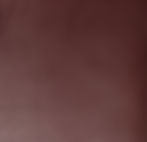

Cacao, food of the gods

Photo: Abigail Johnson
Cacao, Theobroma cacao, is a sacred plant that originated in the Amazon about 10 million years ago and was domesticated more than 5 thousand years ago in the same region. Known as the 'food of the gods,' cacao has long been cherished for both its physical and spiritual benefits. Today, cacao is enjoyed worldwide in a variety of forms, with chocolate being the most consumed.
In Peru, where I am from, there are more than 14 varieties of cacao. The tree thrives in humid, shaded environments and grows in the understory of rainforests, reaching heights of 15 to 25 feet. Cacao trees produce large, colorful pods that contain 20 to 50 cacao beans, which are harvested, fermented, and dried to be processed into cacao paste and later into chocolate products.
Cacao is rich in antioxidants, and contains compounds like theobromine which can have mood-enhancing and heart-opening effects. It is rich in essential minerals, particularly magnesium, which supports muscle and nerve function, iron for oxygen transport, copper for red blood cell formation, potassium for fluid balance, and zinc for immune health.

Photo: Abigail Johnson
Unfortunately, cacao production is closely linked to modern slavery, particularly in regions like West Africa, where a significant portion of the world’s cacao is grown. Millions of children and adults are subjected to exploitative labor practices, including forced labor, trafficking, and unsafe working conditions on cacao farms. Many farmers, many of them from indigenous communities, are trapped in poverty and unable to afford fair wages, leading to the exploitation of vulnerable workers.
That's why, for me, it's essential to source cacao for rituals from companies that uphold fair trade and ethical practices, and to choose seeds from small farmers who respect these trees and follow organic, traditional methods passed down through generations.

Photo: Abigail Johnson
CACAO RITUALS AND HISTORY
A cacao ritual is a heart-opening gathering where participants share a special drink made with a high dose of pure cacao, an connect with the spirit of this sacred plant, as well as with themselves, others, and nature. Cacao has been used for thousands of years by indigenous cultures for its medicinal, spiritual, and healing properties, particularly in Mesoamerican civilizations like the Maya and Olmec, and in the upper Amazon region where it originated and where my paternal ancestors are from... It was even used as currency.
When used in rituals and spiritual circles (often referred to as "ceremonial cacao"), we offer organic cacao sourced from fair trade practices, with full traceability of its origin. Unlike everyday chocolate, ceremonial cacao is consumed in a raw, unrefined state, as a warm drink, just with water or combined with other ingredients to enhance its healing properties.
In the Popol Vuh, the sacred text of the K'iche' Maya, cacao is mentioned as a gift from the gods, symbolizing life and sustenance. The myth describes how the gods created humans from maize, but they struggled to provide a suitable food offering for the newly created beings. When the gods sought a food that could nourish and sustain humans, they turned to cacao. This divine food was seen as a vital offering from the gods, and it became a central element in Maya rituals and offerings. The Popol Vuh reflects the deep cultural and spiritual significance cacao held in Maya society, where it was not only consumed but also revered as a symbol of divine favor and soul nourishment.
HUACA MONTEGRANDE
Recent discoveries at Huaca Montegrande, a spiral-shaped archaeological center in northern Peru, my home country, have unveiled the ritualistic practices of the Marañón civilization dating back around 6,000 years according to last carbon-14 tests from 2025. Up to 2024, the approximate dating was 5,300 years (Similar discoveries have been found in a another archaeological site in Palanda, southern Ecuador, from the same civilization). The oldest domesticated cacao known to date was found in Montegrande, alongside other traditional foods, ritualistic ceramic pieces and ancient human burials. Researchers believe that the highest religious leader was possibly a woman and excavation of her tomb has been part of the new stage of this project that started in August 2025. These groundbreaking findings, the result of over a decade of scientific research lead by archaeologist Quirino Olivera, are reshaping our understanding of the history of Amazonian cultures and the origins of cacao.

Photo: Iñigo Maneiro
I am excited to share that I am part of the Huaca Montegrande's communications team and I also designed its website. This incredible ancient temple built by the Marañón people around 6 thousand years ago in what is now Jaén, Cajamarca, in northern Peru, is captivating scientists, archaeologists, cacao ceremonialist and consumers, and history enthusiasts around the globe. Check out the short film exploring the origin of cacao, where I had the pleasure of being part of the editing process for the English version.
If you'd like to support the research and educational initiatives of this important archaeological center, or invite Dr. Olivera to speak in the United States, please feel free to reach out via email.
The Origin of Cacao (2025)


